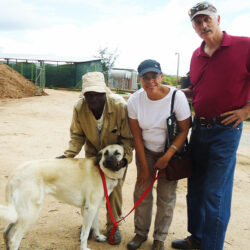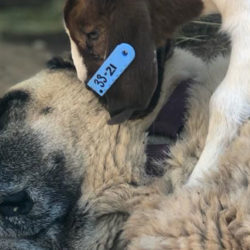Livestock Guarding Dogs Protect Cheetahs and Wolves, Too!
-

- by Dr. Laurie Marker September 24, 2016
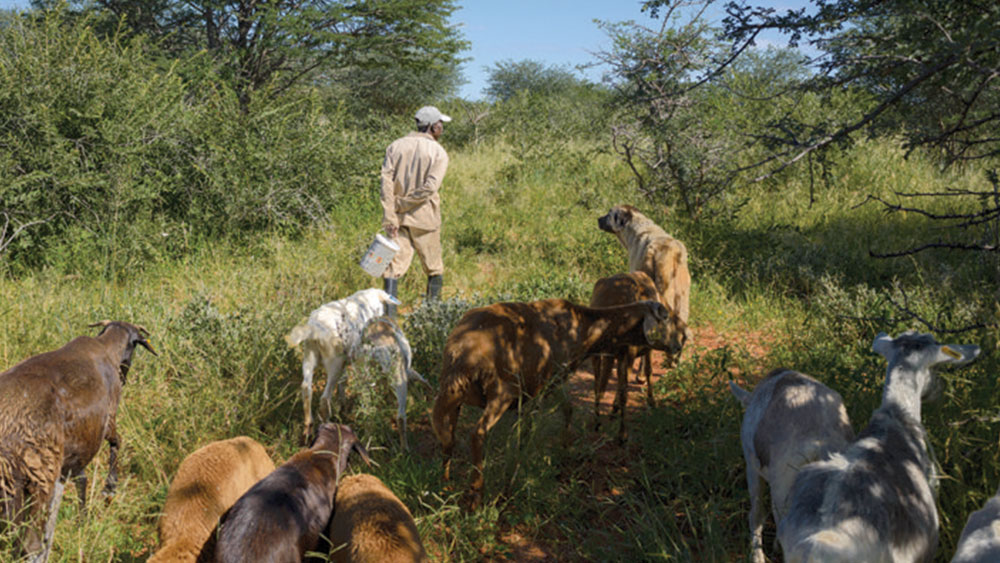
By Dr. Laurie Marker and Heather Taft
Cheetahs in Africa and wolves in North America have a lot in common. They are both top predators, they are both considered threats to livestock, and people are increasing their use of livestock guarding dogs to protect their herds from them. Incidentally, this benefits both the farmers, decreasing the number of animals lost each year to predators, as well as the predators themselves because there are fewer cheetahs and wolves killed to protect livestock. For two species that are considered endangered, the increasing use of this non-lethal method to keep predators away can have a great impact on the ability for these species to increase their population size as well.
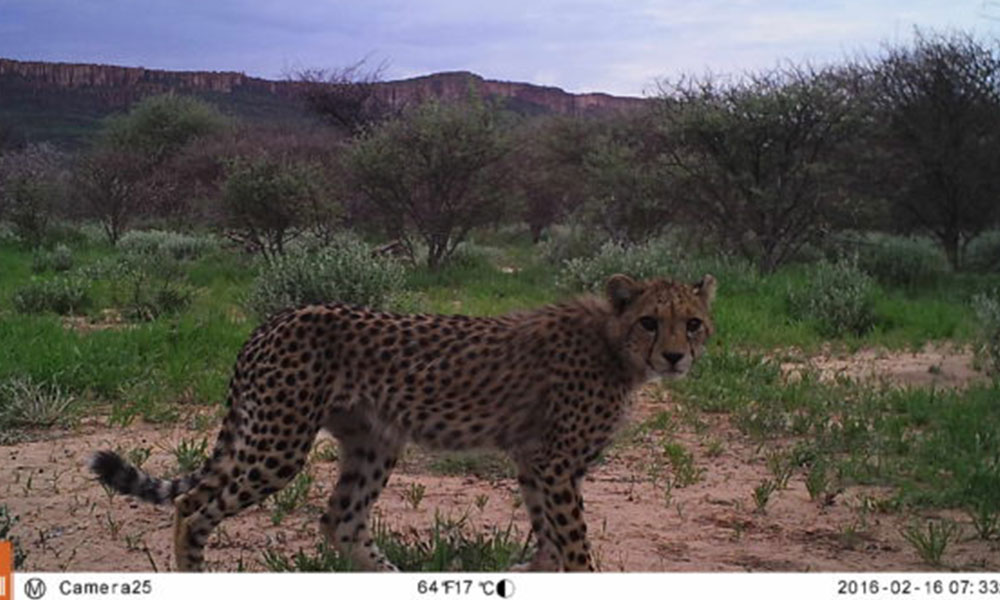
Misperceptions about Cheetahs
Imagine the life of an African farmer… Living on different forms of income generated from the land, such as farming crops, raising and selling livestock, and even poaching when they become really desperate. Their annual income may be less than $8,000. They may not have electricity, a car, or easy access to health care. They work long back-breaking days to feed their family. However, sharing land with African predators means a farmer may occasionally find partially eaten carcasses of their livestock – a very costly loss! Even one animal gone from the herd can impact a farmer’s livelihood.
Cheetahs are threatened by extinction and listed as Vulnerable in Appendix I by the Convention on Trade for Endangered Species (CITES). This can lead to less than ideal solutions for farmers to prevent further death of their livestock when they do find a dead goat. Do they hunt down the suspected cheetah and risk a heavy fine (in some countries), or do they leave the cheetah alone, risking further deaths of their livestock?
One of the big obstacles to saving cheetahs in Africa is the perception that they are nuisance species that intentionally hang around farms to prey upon livestock. There are several basic cheetah habits that contribute to the misperception that cheetahs roam farmlands to kill and eat livestock. With the loss of habitat, the best option would be to live in protected reserves. This includes species like lions, who are competition for cheetahs and are known to steal their kills. To reduce this competition with other predators, and have access to their natural prey species, the vast majority of cheetahs are found outside protected areas on livestock farmland.
Also, cheetahs actually prefer to eat wild species – ones they are familiar with, that have evolved alongside them. Therefore, managing a wild prey base is very important. Cheetahs can kill livestock, but this is more common when the livestock has no protection from a herder, guarding dog, it is not corralled, or there is no wild prey. Cheetahs may also kill livestock when they become desperate for food, in particular they would prey on those animals which are lame or sick or lag behind the rest of the herd. Unfortunately, in many areas, there is very little wildlife left due to increased poaching. Continued poaching leaves cheetahs looking at local livestock herds for food more frequently. As Africa’s human population increases and poverty continues unabated, habitat loss will increase, and the wild species cheetahs prey upon will decrease. Fewer wild prey species increases the number of livestock killed by predators and increases human-predator conflict. One thing farmers may not be aware of is that by simply using a better method of protection, their livestock may survive better and they wouldn’t have to worry about predators as much.
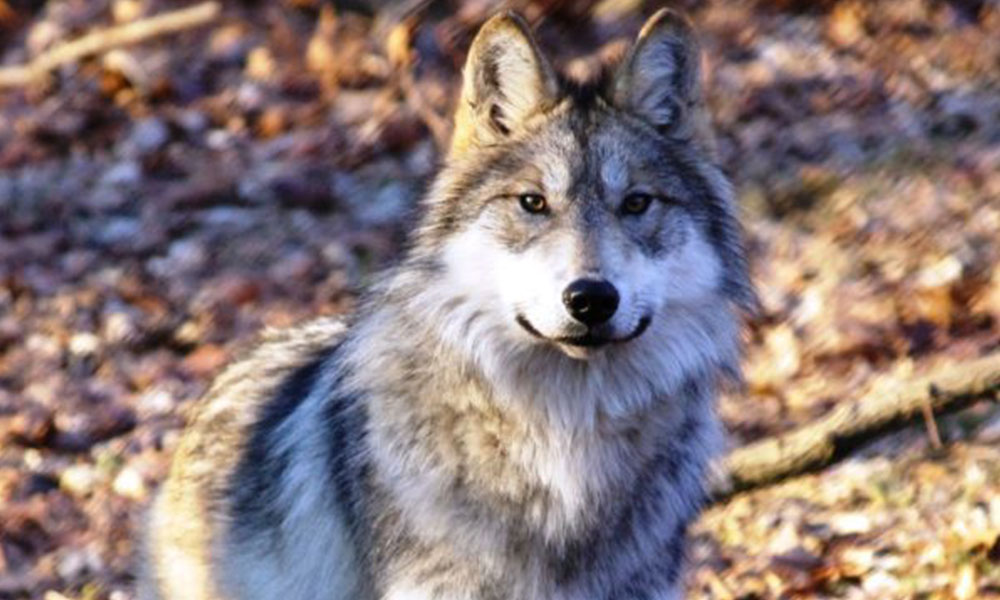
Wolves Face Similar Problems
Wolves in North America are also seen as predators who will attack and kill livestock. Like farmers in Africa, ranchers in North America depend upon the income generated by their livestock, and they don’t always use alternate forms of livestock management. The death of an animal is a very serious problem and lethal actions may appear to be a quick solution. Currently, wolves are listed as endangered by the U.S. Fish and Wildlife Service across much of the United States. This is important to help protect them and encourage their populations to grow. For ranchers, an endangered status for wolves limits their ability to manage threats to their herds through lethal means.
In a study by Wielgus and Peebles published in PLOS ONE in December of 2014 it was found that killing wolves is associated with more livestock deaths the following year. It was suggested that the death of wolves in the region leaves open habitat for new wolves to occupy. This may mean a new pair of wolves will take over the territory. As they have pups and the pack grows more wolves will occupy the area. Young wolves may not know the human-associated dangers of killing livestock, increasing the chance of a negative human-wolf encounter. Livestock management is a much better option to help reduce the death of livestock.
Livestock Guarding Dogs to Protect Herds
A red wolf, also critically endangered and only found in the wild in North Carolina, the only current release site. They once were found throughout the southeastern United States, from the Ohio River valley into Missouri and south to Texas.
A red wolf, also critically endangered and only found in the wild in North Carolina, the only current release site. They once were found throughout the southeastern United States, from the Ohio River valley into Missouri and south to Texas.
There are several ways that farmers can help control cheetahs and wolves to keep them away from their herds without killing the predator. One increasingly popular way to combat the issue is to use a livestock guarding dog (LGD). There are over 20 breeds of guarding dogs, most from Europe, that have been guarding livestock for several thousand years. These dogs live with the herd instead of as pets in homes. They have bonded with the livestock from a very early age and will protect them from predators that may become interested in the herd.
LGDs have been shown to be effective at preventing the death of livestock. In Namibia, the Cheetah Conservation Fund began a LGD program in 1994 using the Anatolian Shepherd and the Kangal, a dog breed from Turkey. They have placed nearly 600 dogs with livestock farmers, providing training in integrated livestock and wildlife management. Over 80 percent of farmers have reported a decrease in the livestock lost when using a LGD. Most breeds of LGDs have been used for centuries to protect livestock from wolves, but the practice decreased as rural farmers became more urbanized. Some dogs used in the United States include the Kangal, the Anatolian Shepherd, Great Pyrenees, and the Akbash.
Selecting the best breed, number of dogs, and specific dog of that breed for each herd is important. Some of the best dogs for livestock protection are large, have a loud bark, are well bonded to their animals, and stay with the herd, but they do not herd the flock. If a dog were to chase away a predator both the dog and the herd are at an increased risk of attack. Larger herds need more dogs to make sure all the animals are protected, allowing the dogs to encircle a herd when needed. With wolves the ideal situation would be to create a dog pack that the wolves see as competition. Then the wolves would stay out of the dog pack’s territory leaving the herd of animals alone.
LGDs can be purchased within the United States from LGD breeders, such as Taylor Farms in Texas. They sell Turkish breeds, including the Kangal and Akbash, which have great reputations as guard dogs. The use of an animal to protect livestock is an environmentally sound way to also help maintain wildlife populations. It may not be possible to save cheetahs and wolves without the use of natural protective methods like LGDs, which greatly reduce the threat they face from farmers. It is wonderful that so many farmers today are adopting this practice!
This blog post was done in collaboration with Endangered Wolf Center. Remember to celebrate Wolf Awareness Week – the third week in October October 9th – 15th and International Cheetah Day on Dec. 4th.
For more info on how wolves and cheetahs can be saved using non-lethal methods check out this great video interview from 2015 between CCF’s Dr. Laurie Marker and Virginia Busch, the executive director of the Endangered Wolf Center. We also hosted it on our site at the link below.
Related Reading
-
October 3, 2022
Eulogy for Aleya – CCF’s Stubborn Sweetheart -
April 8, 2022
Puppy Delivery Journey with Gebhardt

